Wild Wings of Pong Dam : A Series on Migratory Birds we saw at Pong Water reservoir during Winters of 2012 @ Himachal Pradesh India || PART-4
Hope you have been enjoying this Series on various birds of Pong Dam. So far we have shared three different Photo Journeys with various birds from Pong Wetland of India. All information shared about the birds is provided by experienced Birders and then later we did some research through web and Birding books. Here comes the fourth Photo Journey but we are still working on finding details about few of the birds in this Photo Journey...
A flying Skylark which was sitting on this wooden piece for a long time and we tried to go closer as we had not enough zoom to capture her in our cameras. This was wonderful bird and while flying it looked more beautiful. Above Photograph doesn't do the justice with beauty of this photograph of a Skylark in Pong Dam, Himachal Pradesh, India.
The Skylark is a small passerine bird species. This lark breeds across most of Europe and Asia and in the mountains of north Africa. It is mainly resident in the west of its range, but eastern populations are more migratory, moving further south in winter. Even in the milder west of its range, many birds move to lowlands and the coast in winter. Asian birds appear as vagrants in Alaska; this bird has also been introduced in Hawaii, western North America, eastern Australia and New Zealand. More details about skylarks can be checked at - http://en.wikipedia.org/wiki/Skylark
The pipits are a cosmopolitan genus, Anthus, of small passerine birds with medium to long tails. Along with the wagtails and longclaws, the pipits make up the family Motacillidae. The genus is widespread, occurring across most of the world, except the driest deserts, rainforests and the mainland of Antarctica. Pipits are slender, often drab, ground-feeding insectivores of open country. Like their relatives in the family, the pipits are monogamous and territorial. Pipits are ground nesters, laying up to six speckled eggs. More details about Pipits can be checked at http://en.wikipedia.org/wiki/Pipit
During two days of Pong Dam visit we saw following birds, out of which some of the birds could not be captured in our cameras.-
Common Coot, Kentish Plover, Little Ringed plover, Sand Lark, Little Stint, Common Teal, Gadwall, Northern Pintail, Grey Heron, Northern Shovler, Northern Lapwing, Pallas Gull, Grey Long eared bat, White Fronted Goose, Eurasian Thicknee, Black Kite, Ruddy Shelduck, Little Cormont, Common Sandpiper, Common Redshank, Little Egret, Bar Headed Goose, Common Pochard, Wegcon, River Tern, European Shag, Wired Tailed Swallow, Black Headed Gull, Brown Headed Gull, Great Egret, White Wagtail, Tufted Duck, Pied Kingfisher, Grey Wagtail, River Lapwing, Slender Billed Gull, Red Wattled Lapwing, Spotted Redshank, Common Redshank, Pipit, Egyptian vulture, Black Winged Stilt, Common House Martin, Red Rumped Swallow
We are still looking for identification of these birds from Pong Dam Lake in Himachal Pradesh, India ! So if you know about the name of this bird please comment back with details and that will be extremely helpful and appreciable.
This is a again a bird which needs identification for PHOTO JOURNEY. So if you know about the name of this bird please comment back with details and that will be extremely helpful and appreciable.
Flying Pintails at Pong Dam Lake in Himachal Pradesh, India.
Ruddy Shelduck enjoying sunbath around the shoreline of Pong Dam Lake in Kangra region of Himachal Pradesh State in India.
Above shown photograph is White Wagtail !
The White Wagtail is a small passerine bird in the wagtail family Motacillidae, which also includes the pipits and longclaws. This species breeds in much of Europe and Asia and parts of north Africa. It is resident in the mildest parts of its range, but otherwise migrates to Africa. It has a toehold in Alaska as a scarce breeder. In some areas, notably Britain and Ireland, the sub-species Pied Wagtail predominates. White Wagtail is an insectivorous bird of open country, often near habitation and water. It prefers bare areas for feeding, where it can see and pursue its prey. In urban areas it has adapted to foraging on paved areas such as car parks. It nests in crevices in stone walls and similar natural and man-made structures.
The White Wagtail is the national bird of Latvia. Check out http://en.wikipedia.org/wiki/White_Wagtail to know more about White Wagtail.
The White Wagtail is the national bird of Latvia. Check out http://en.wikipedia.org/wiki/White_Wagtail to know more about White Wagtail.
You may Also Like Following PHOTO JOURNEYs -

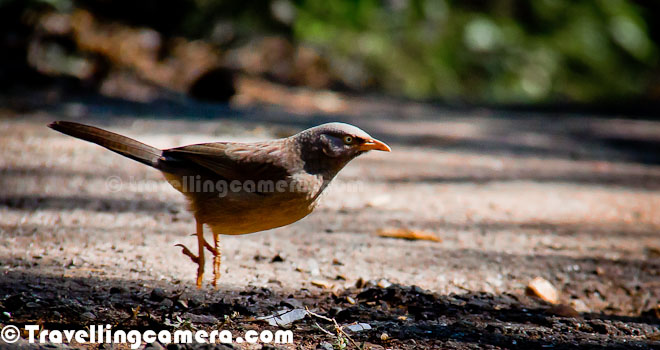









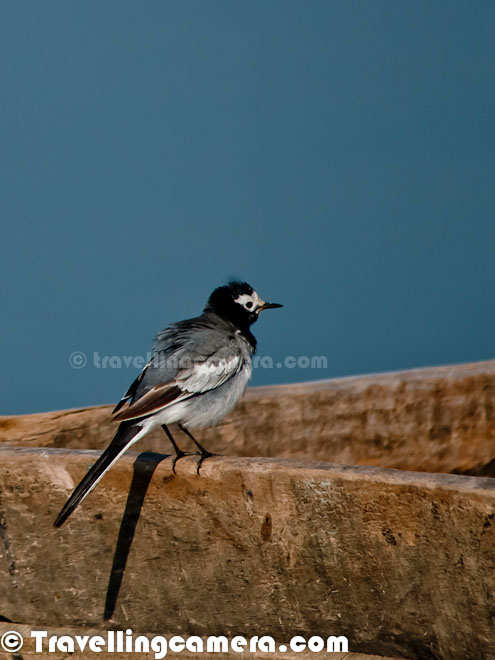


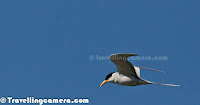







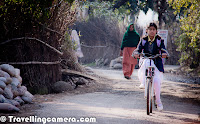


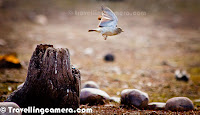


.jpg)
Comments